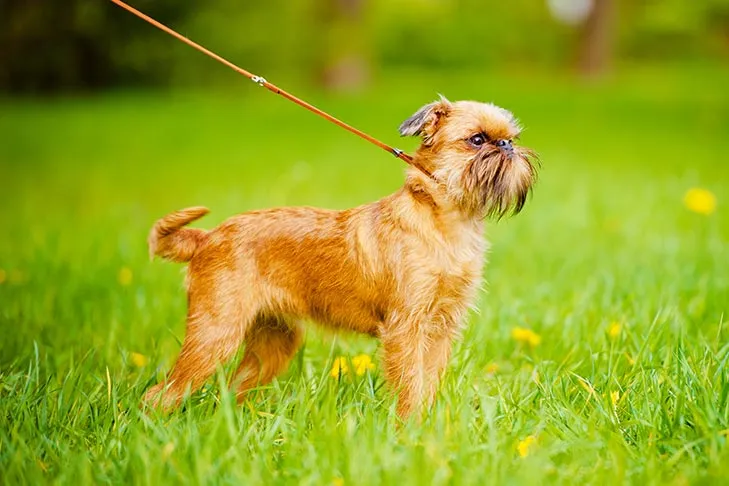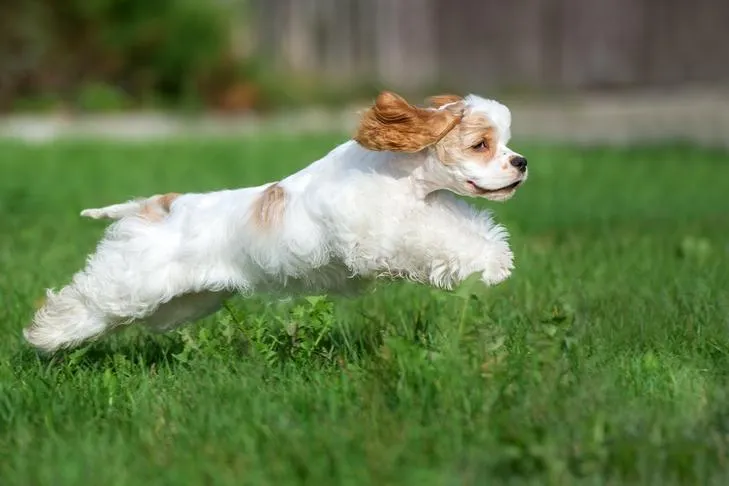Teaching your dog to reliably “come when called,” or recall to you, is arguably one of the most critical skills they can learn. This command is a cornerstone of responsible dog ownership, ensuring your dog’s safety in various situations, from crowded parks to unexpected emergencies. However, mastering recall can be a significant challenge for many dog owners, as the world offers countless fascinating distractions that can easily capture a dog’s attention. Every time you issue the “come” cue, you’re asking your dog to disengage from whatever captivating activity they’re involved in and turn their focus entirely to you. To build a consistently reliable recall, our primary goal is to make coming back to us the most rewarding and enjoyable experience for our dogs, outweighing any other stimuli.
Understanding Reliable Recall
“Reliable recall” signifies a level of training where you are highly confident—around 99.99% sure—that your dog will enthusiastically respond to your “come” cue. While no dog is a robot and absolute certainty is impossible, especially with a life-saving skill like recall, the aim is to achieve the highest possible level of consistency. This level of dependability is particularly vital if you plan to allow your dog off-leash in unfenced areas outside of a secure dog park or yard. Beyond recreational freedom, a strong recall is an indispensable safety measure in emergency scenarios, such as when your dog slips their leash or encounters an unexpected hazard. A dog that consistently comes back when called is a safer dog. If your dog tends to bolt, mastering this command is essential, especially if you want to avoid situations like your dog running out the door.
Safe Alternatives for Off-Leash Play
It’s important to recognize that there’s no shame in keeping your dog on a leash if you’re not fully confident in their recall abilities. Prioritizing their safety is always paramount. Instead of forcing off-leash play before your dog is ready, consider safer alternatives. Allowing them to play in securely fenced areas provides freedom without risk. Another excellent option is to use a long leash, which offers your dog extended opportunities to explore their surroundings while remaining safely tethered to you. This gradual approach helps build their confidence and your control without putting them in potentially dangerous situations.
 Brussels Griffon attentively standing in the grass on a leash, ready for instruction.
Brussels Griffon attentively standing in the grass on a leash, ready for instruction.
Regardless of how strong your dog’s recall is, it is crucial to always respect and adhere to all local leash laws. This applies not only to public spaces but also to areas around your home, including your front yard or any part of your property that isn’t fully enclosed. Many local, state, and national parks also enforce strict leash regulations for the safety of all visitors and wildlife.
Laying the Foundation for Recall Training
A key component of successful recall training is to transform it into an engaging game for your dog. Begin your training journey in a controlled, low-distraction environment, such as the quiet comfort of your home.
- Start with High-Value Motivation: Initially, capture your dog’s attention by showing them a favorite dog toy or, even better, a particularly tasty treat. As soon as they begin to move towards you, offer enthusiastic verbal praise.
- Reward the Approach: Once your dog reaches you, immediately reward them with the toy or treat. Consistency in immediate reward is crucial here.
- Introduce the Verbal Cue: After several repetitions where your dog consistently looks at you and starts moving in your direction, you can introduce your chosen verbal cue (e.g., “Come!”, “Here!”, “Close!”). It’s vital to only add the cue as your dog is already moving towards you, associating the word with the action they are already performing successfully.
Once your dog reliably responds in this low-distraction setting, you can slowly increase the challenge. Begin by asking your dog to come before you show them the treat, ensuring the treat is still readily available as a reward. Always use high-value treats—such as small pieces of cooked chicken, cheese, or beef liver—when they successfully reach you. These special treats make the act of coming back to you exceptionally rewarding. Simultaneously, start gradually increasing the distance between you and your dog within the same low-distraction environment.
Engaging Recall Games to Build Speed and Enthusiasm
To make recall training fun and reinforce positive associations, incorporate these interactive games:
- Catch Me: While walking your dog on-leash, get their attention. Then, quickly turn around and run a few steps away from them. As your dog moves to follow you, enthusiastically say your verbal recall cue, “Come!” or “Here!”. After a few steps, stop and reward them generously with a high-value treat or their favorite toy. Before you start running, always ensure your dog is paying attention to avoid any sudden jerks on the leash.
- Find Me: Once your dog has a solid grasp of the basic recall in your presence, you can introduce an element of hide-and-seek to build speed and excitement. Call your dog from another room, encouraging them to seek you out. When your dog successfully finds you, shower them with praise and immediate, high-value rewards. This game is not only effective for reinforcing recall but also provides mental stimulation and bonding for both of you.
- Hot Potato: Gather two or more family members or friends and equip each person with high-value treats. Stand a good distance apart and take turns calling your dog between you. Each time your dog comes to the person who called them, they should receive a reward and enthusiastic praise. This game helps generalize the recall command, teaching your dog to respond to different people in various locations.
A common but significant training mistake is to always recall your dog, immediately put them on a leash, and then go home, effectively ending all the fun. Dogs are intelligent and will quickly learn to associate the “come” command with the end of their enjoyable free time, making them less inclined to respond in the future. To prevent this “poisoned” association, practice recalling your dog, giving praise and a treat, then immediately releasing them to go back to what they were doing. This teaches them that coming to you doesn’t always mean the fun is over; sometimes, it just means a quick, rewarding check-in. This strategy is also helpful if your dog has a habit of trying to avoid being caught, such as if your dog gets out of his crate and doesn’t want to come back inside.
What is a “Poisoned Cue” and How to Fix It?
Have you ever found yourself repeatedly yelling, “Come! Come! Come! Please come!” with increasing frustration, only for your dog to ignore you? If so, you might be dealing with a “poisoned cue.” This often happens unintentionally when a verbal cue either loses its clear meaning or develops a negative association for the dog, causing them to disregard it. The easiest way to poison a cue is through overuse, repeating the word endlessly without your dog responding. When a dog consistently fails to respond, the word loses its power and positive association.
 An active Cocker Spaniel joyfully running through a lush green yard.
An active Cocker Spaniel joyfully running through a lush green yard.
If you suspect your “come” cue has been poisoned, the most effective solution is to change your verbal cue to something entirely new. For instance, if you previously used “come,” you could switch to “here,” “close,” or even a unique whistle. Once you’ve chosen a new cue, go back to basics. Reintroduce the new recall cue as if you’re starting from scratch, following all the steps for foundational recall training in a low-distraction environment. This fresh start allows you to build a new, positive association with the command. This re-training can be particularly important for dogs who have learned problematic behaviors like how to stop my dog running out the door when opportunities arise.
Essential Recall Training Tips for Success
Achieving a truly reliable recall requires patience, consistency, and a clear understanding of canine learning. Here are some indispensable tips to guide your training:
- Avoid Repeating Yourself: If you find yourself having to repeat your recall cue multiple times, it’s a clear signal that the environment might be too distracting for your dog, or they haven’t yet mastered the skill at that particular level of difficulty. Instead of repeating, reduce distractions or go back to a simpler training setup.
- Reward Eye Contact and Proximity: Whenever you notice your dog voluntarily looking at you or choosing to be close to you, offer verbal praise and a treat. While you might use a lot of treats initially, you are powerfully reinforcing a crucial lesson: good things consistently happen when your dog pays attention to you and stays near.
- Never Punish Your Dog for Coming: Even if your dog took a frustratingly long time to respond or caused you worry, always praise them when they eventually come to you. Punishing a delayed recall will teach your dog that coming to you is a negative experience, making them even less likely to respond next time.
- Reward! Reward! Reward!: When training recalls, consistently use high-value treats and toys. This is especially important during the learning phase and when practicing in new, more distracting environments. You want your dog to unequivocally associate coming to you with receiving something truly fantastic.
- Practice Recalls Daily: Short, consistent training sessions are far more effective than infrequent, long ones. Slowly and incrementally increase the difficulty and the level of distraction in your practice environments. Moving too quickly through the stages is likely to confuse your dog and diminish the reliability of their recall.
- If You Require Recall in an Emergency, Don’t Chase Your Dog: Chasing a dog often turns the situation into a game for them, encouraging them to run further away. Instead, try running away from your dog while calling them enthusiastically. This often triggers their natural chase instinct and inspires them to follow you. This can be especially effective if you need to quickly bring your dog back from a potentially dangerous situation, similar to managing a dog who has learned how to stop a dog from breaking out of crate and bolt.
Conclusion
Teaching your dog to “come” reliably is an investment in their safety and your peace of mind. By transforming training into an enjoyable game, consistently using high-value rewards, and patiently increasing difficulty, you can build a strong, dependable recall. Remember to be mindful of “poisoned cues” and always create positive associations with the command. With daily practice and the right approach, your dog will learn that returning to you is always the best decision, ensuring they stay safe and by your side in any situation. Start your training today, and build that invaluable bond of trust and responsiveness with your canine companion.
